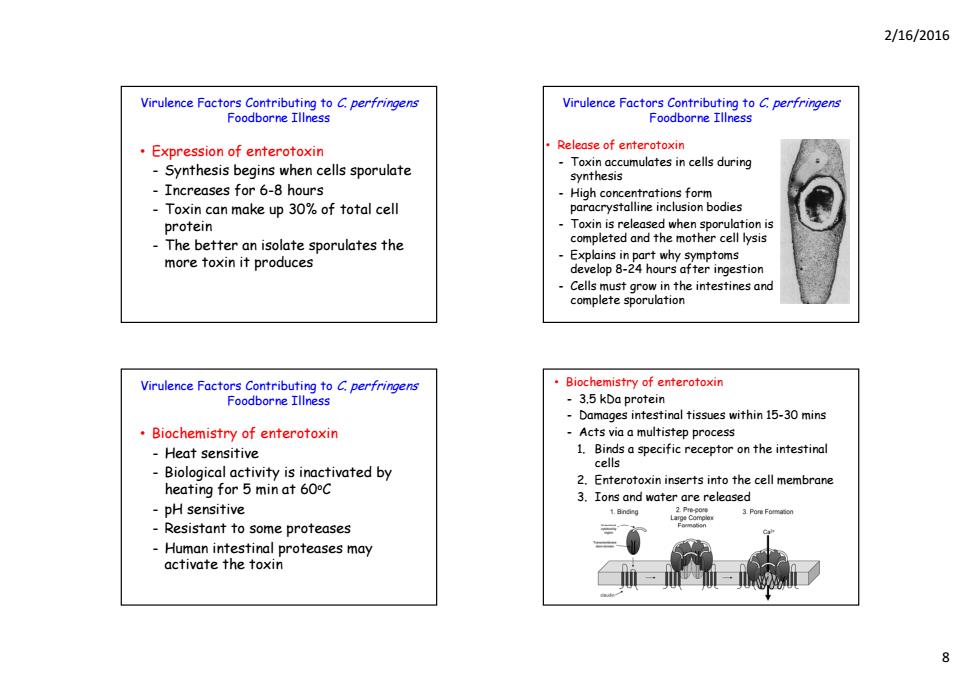正在加载图片...

2/16/2016 Virulence Factors Contributing to C.perfringens Virulence Factors Contributing to C perfringens Foodborne Illness Foodborne Illness Expression of enterotoxin Release of enterotoxin Synthesis begins when cells sporulate Toxin accumulates in cells during synthesis Increases for 6-8 hours High concentrations form Toxin can make up 30%of total cell paracrystalline inclusion bodies protein Toxin is released when sporulation is The better an isolate sporulates the completed and the mother cell lysis more toxin it produces Explains in part why symptoms develop 8-24 hours after ingestion Cells must grow in the intestines and complete sporulation Virulence Factors Contributing to C.perfringens Biochemistry of enterotoxin Foodborne Illness 3.5 kDa protein -Damages intestinal tissues within 15-30 mins Biochemistry of enterotoxin Acts via a multistep process -Heat sensitive 1.Binds a specific receptor on the intestinal cells Biological activity is inactivated by heating for 5 min at 60C 2.Enterotoxin inserts into the cell membrane 3.Ions and water are released pH sensitive Resistant to some proteases Human intestinal proteases may activate the toxin 2/16/2016 8 Virulence Factors Contributing to C. perfringens Foodborne Illness • Expression of enterotoxin - Synth i b i h ll hesis begins when cells sporulate - Increases for 6-8 hours - Toxin can make up 30% of total cell protein - The better an isolate sporulates the more toxin it produces Virulence Factors Contributing to C. perfringens Foodborne Illness • Release of enterotoxin - Toxin accumulates in cells during synthesis - High concentrations form paracrystalline inclusion bodies - Toxin is released when sporulation is completed and the mother cell lysis - Explains in part why symptoms develop 8-24 hours after ingestion - Cells must grow in the intestines and complete sporulation Virulence Factors Contributing to C. perfringens Foodborne Illness • Biochemistry of enterotoxin - H ii eat sensitive - Biological activity is inactivated by heating for 5 min at 60oC - pH sensitive - Resistant to some proteases - Human intestinal proteases may activate the toxin • Biochemistry of enterotoxin - 3.5 kDa protein - Damages intestinal tissues within 15-30 mins - Acts via a multistep process 1. Binds a specific receptor on the intestinal cells 2. Enterotoxin inserts into the cell membrane 3. Ions and water are released